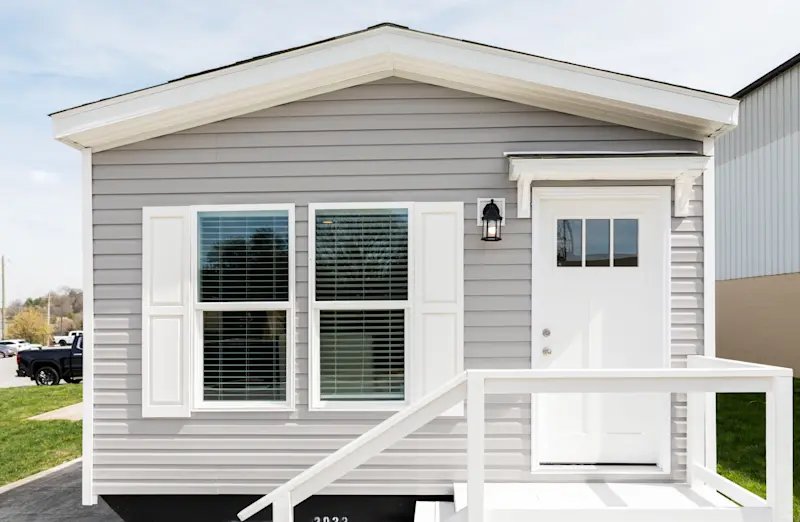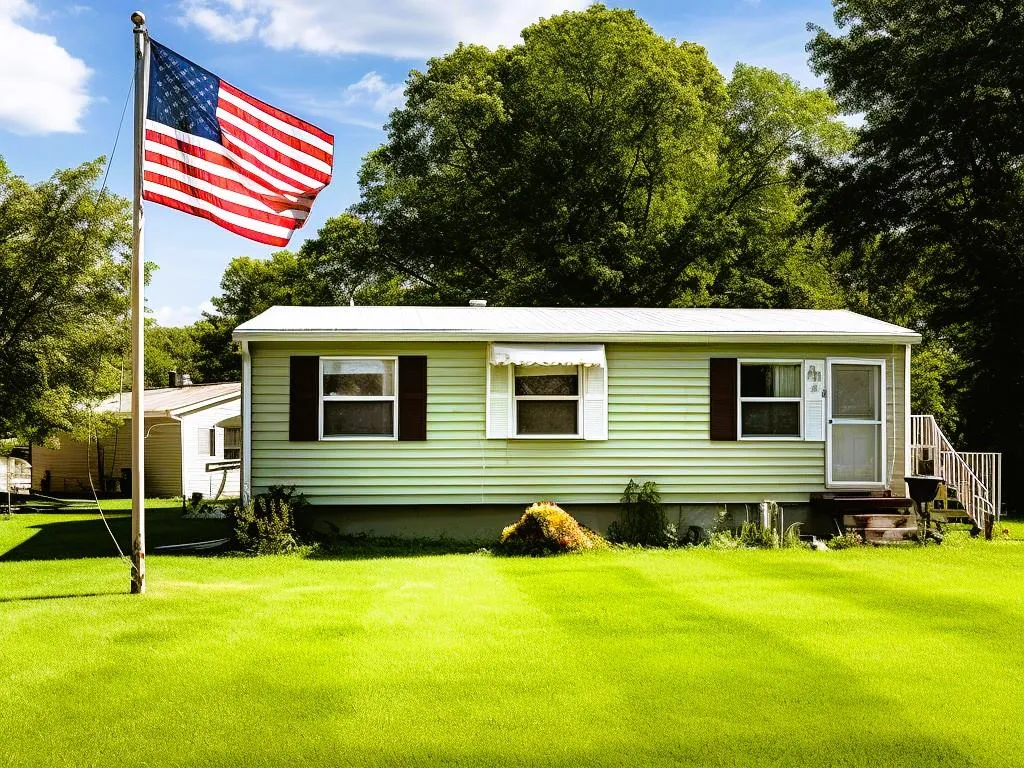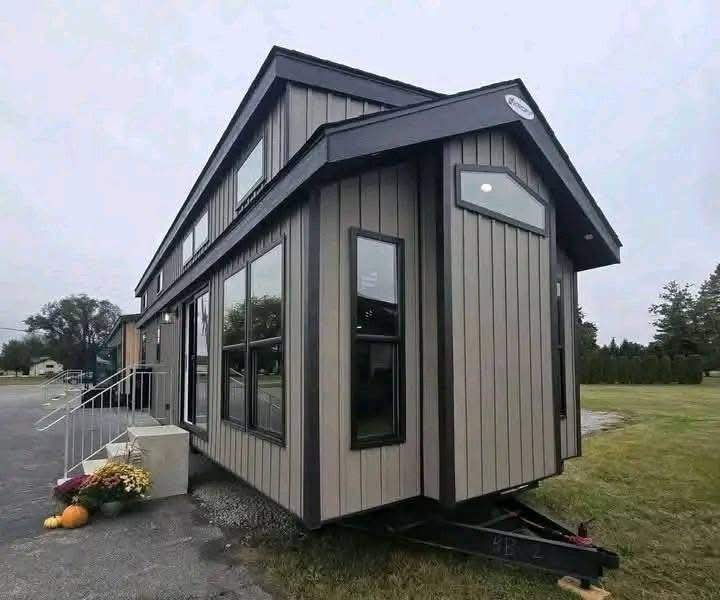Uncategorized
Tiny Homes for Sale – Compact Living Solutions and Investment Opportunities
Table of Contents
Tiny homes for sale represent one of the fastest-growing segments of the alternative housing market, offering compact living solutions that combine affordability, sustainability, and lifestyle simplification in homes typically ranging from 100 to 600 square feet. The tiny home movement has evolved from a niche lifestyle choice to a mainstream housing option that appeals to diverse demographics seeking financial freedom, environmental responsibility, and simplified living.
The tiny home sales market has experienced explosive growth, with the industry expanding by over 67% annually as buyers discover the benefits of downsized living [1]. This growth is driven by factors including rising traditional housing costs, increased environmental awareness, desire for financial independence, and changing lifestyle priorities that emphasize experiences over possessions.
Modern tiny homes for sale offer sophisticated designs, high-quality construction, and innovative space-saving solutions that maximize functionality while minimizing environmental impact and financial burden. From basic starter models under 50,000toluxurycustombuildsexceeding50,000 to luxury custom builds exceeding 50,000toluxurycustombuildsexceeding150,000, the tiny home market provides options for various budgets and lifestyle preferences while maintaining the core principles of simplified, sustainable living.
Types of Tiny Homes Available for Sale
Traditional Tiny Houses on Wheels (THOWs)
Mobile tiny homes built on trailers provide the ultimate flexibility, allowing owners to relocate their homes as needed for work, lifestyle changes, or seasonal preferences. These homes typically range from 100 to 400 square feet and include all essential living amenities in compact, efficient layouts.
Custom-built THOWs offer personalized designs that reflect individual preferences and needs, with builders working directly with buyers to create unique homes that maximize functionality within size constraints. Custom builds typically cost 80,000to80,000 to 80,000to150,000 depending on size, materials, and features.
Production model THOWs provide more affordable options with standardized designs and construction processes that reduce costs while maintaining quality. These homes typically range from 45,000to45,000 to 45,000to85,000 and offer proven layouts and features that appeal to first-time tiny home buyers.
Foundation-Based Tiny Homes
Permanent tiny homes built on foundations provide stability and often qualify for traditional financing and insurance options that mobile tiny homes may not access. These homes can be built larger than mobile versions while still maintaining tiny home principles and aesthetics.
Accessory Dwelling Units (ADUs) represent a growing segment of the tiny home market, providing additional housing on existing properties for rental income, family members, or home offices. ADUs typically range from 300 to 800 square feet and must comply with local zoning regulations.
Tiny home communities offer foundation-based tiny homes in planned developments that provide community amenities, shared resources, and social connections while maintaining the benefits of tiny home living.
Specialized Tiny Home Designs
Off-grid tiny homes include solar power systems, composting toilets, rainwater collection, and other features that enable completely self-sufficient living without connections to traditional utilities. These homes appeal to buyers seeking maximum independence and environmental sustainability.
Luxury tiny homes incorporate high-end materials, premium appliances, and sophisticated design features that provide upscale living experiences in compact spaces. Luxury tiny homes can cost 100,000to100,000 to 100,000to200,000 or more while maintaining tiny home size principles.
Multi-unit tiny home developments include tiny home villages, rental communities, and investment properties that provide multiple tiny homes in single developments for various residential and commercial applications. Small houses for sale
Benefits and Advantages of Tiny Home Ownership
Financial Benefits and Affordability
Lower purchase prices for tiny homes typically range from 40,000to40,000 to 40,000to120,000, making homeownership accessible to buyers who cannot afford traditional houses. This affordability allows buyers to own homes outright or carry much smaller mortgages than traditional housing requires.
Reduced ongoing costs include lower utility bills, minimal maintenance expenses, reduced property taxes (for foundation-based homes), and decreased insurance costs that can save thousands of dollars annually compared to traditional homeownership.
Debt-free living opportunities enable many tiny home owners to pay cash for their homes, eliminating mortgage payments and providing financial freedom that supports other life goals and priorities.

Environmental and Sustainability Benefits
Reduced environmental footprint through smaller space requirements, energy-efficient systems, and sustainable building materials helps tiny home owners minimize their impact on the environment while maintaining comfortable living standards.
Energy efficiency in tiny homes often exceeds traditional houses due to compact size, high-quality insulation, and efficient appliances that reduce energy consumption and utility costs while supporting environmental goals.
Sustainable living practices are easier to implement in tiny homes, including composting, rainwater harvesting, solar power, and waste reduction that support environmentally conscious lifestyles.
Lifestyle and Personal Benefits
Simplified living reduces the burden of maintaining and organizing large amounts of possessions, allowing owners to focus on experiences, relationships, and personal growth rather than material accumulation.
Location flexibility with mobile tiny homes enables owners to live in various locations, follow job opportunities, or enjoy seasonal living arrangements that traditional homeownership cannot accommodate.
Community connections in tiny home communities often provide social support, shared resources, and like-minded neighbors who share values of sustainability and simplified living.
Tiny Home Construction and Design Features
Space-Saving Design Innovations
Multi-functional furniture maximizes utility in tiny homes through pieces that serve multiple purposes, such as storage ottomans, fold-down tables, and convertible seating that transforms into sleeping areas.
Vertical space utilization includes loft bedrooms, high storage areas, and tall ceilings that create the illusion of larger spaces while maximizing functional square footage in compact floor plans.
Built-in storage solutions integrate storage throughout tiny homes in creative ways, including under-stair storage, hidden compartments, and custom cabinetry that eliminates the need for additional furniture.
Modern Amenities and Systems
Full kitchen facilities in tiny homes include full-size or compact appliances, adequate counter space, and sufficient storage for cooking and food preparation, proving that small spaces can accommodate complete living functions.
Complete bathroom facilities feature space-efficient designs with composting toilets, compact showers, and innovative storage that provide full bathroom functionality in minimal space.
Climate control systems include efficient heating and cooling solutions like mini-split systems, radiant heating, or wood stoves that maintain comfortable temperatures while minimizing energy consumption.
Quality Construction and Materials
High-quality building materials in tiny homes often exceed those used in traditional construction, as the smaller scale allows for premium materials within reasonable budgets while ensuring durability and longevity.
Professional construction standards ensure that tiny homes meet safety and quality requirements, with many builders following RV industry standards or local building codes depending on the home’s classification and intended use.
Customization options allow buyers to personalize their tiny homes with specific materials, finishes, and features that reflect their preferences and lifestyle needs while maintaining efficient design principles.
Financing and Purchasing Tiny Homes
Financing Options and Challenges
Traditional mortgages are typically not available for tiny homes on wheels, as they’re classified as personal property rather than real estate. However, foundation-based tiny homes may qualify for traditional financing depending on local regulations and lender policies.
Personal loans provide financing for tiny homes with terms typically ranging from 5 to 15 years and interest rates that may be higher than traditional mortgages but lower than credit card financing.
RV loans are sometimes available for tiny homes on wheels that meet RV certification standards, providing financing terms similar to recreational vehicle purchases with competitive interest rates and reasonable terms.
Alternative Financing Solutions
Builder financing programs offered by some tiny home manufacturers provide direct financing options that can simplify the purchase process and provide competitive terms for qualified buyers. Tiny houses for sale
Peer-to-peer lending platforms offer alternative financing sources for tiny home purchases, connecting buyers with individual investors who provide loans for alternative housing purchases.
Cash purchases remain common in the tiny home market, as the lower purchase prices make it feasible for many buyers to save for cash purchases that eliminate financing costs and provide immediate ownership.

Insurance and Legal Considerations
Insurance options for tiny homes vary depending on whether they’re mobile or foundation-based, with mobile tiny homes often requiring RV insurance while foundation-based homes may qualify for traditional homeowner’s insurance.
Legal compliance requirements include understanding local zoning laws, building codes, and regulations that affect where tiny homes can be placed and how they can be used for residential purposes.
Registration and titling for mobile tiny homes may require RV registration or other documentation depending on local regulations and the home’s classification and intended use.
Tiny Home Communities and Placement Options
Tiny Home Communities and Villages
Planned tiny home communities provide dedicated developments designed specifically for tiny home living, offering community amenities, shared resources, and social connections while maintaining individual home ownership.
Tiny home villages often include rental and ownership options within single developments, providing flexibility for people who want to try tiny home living before committing to purchase.
Eco-villages and sustainable communities incorporate tiny homes as part of larger sustainable living initiatives that emphasize environmental responsibility, community cooperation, and alternative lifestyle choices.
Private Property Placement
Backyard placement on family or friends’ property provides affordable living arrangements while maintaining independence and privacy. This option requires understanding local zoning laws and obtaining necessary permits.
Rural property placement offers opportunities for off-grid living and maximum privacy, though buyers must consider access to utilities, internet, and services when choosing rural locations.
RV parks and campgrounds sometimes accommodate tiny homes on wheels for temporary or long-term placement, providing utilities and amenities while maintaining mobility options.
Legal and Zoning Considerations
Zoning compliance varies significantly by location, with some areas embracing tiny homes while others restrict or prohibit them. Research local regulations before purchasing to ensure legal placement options.
Building code requirements may apply to foundation-based tiny homes, requiring compliance with minimum size requirements, safety standards, and other regulations that affect design and construction.
HOA restrictions in some communities may prohibit tiny homes or impose restrictions on their placement and use, making it important to understand community rules before purchasing.
Investment Opportunities in Tiny Homes
Rental Property Investments
Vacation rental opportunities for tiny homes in desirable locations can provide excellent rental income, as unique accommodations often command premium rates from travelers seeking distinctive experiences.
Long-term rental properties in areas with housing shortages can provide steady rental income while offering affordable housing options for tenants who prefer tiny home living.
Tiny home communities offer opportunities for investors to develop rental communities that cater to the growing demand for alternative housing options and simplified living.
Business and Commercial Applications
Tiny home building businesses provide opportunities for entrepreneurs to enter the growing tiny home construction market, serving buyers who want custom homes or production models.
Tiny home rental businesses can provide income through short-term vacation rentals, long-term housing rentals, or specialized applications like mobile offices or retail spaces.
Consulting and design services for tiny homes offer opportunities for professionals with expertise in small space design, sustainable building, or alternative housing solutions.
Market Growth and Future Potential
Increasing demand for affordable housing solutions positions tiny homes as growth opportunities for investors and businesses that serve this expanding market segment.
Regulatory improvements in many areas are making tiny homes more legally viable and accessible, expanding market opportunities and reducing barriers to tiny home ownership and development.
Mainstream acceptance of tiny homes is growing, with increased media coverage, financing options, and community acceptance creating more stable and profitable market conditions.
Frequently Asked Questions About Tiny Homes for Sale
How much do tiny homes typically cost?
Tiny homes for sale typically range from 40,000to40,000 to 40,000to120,000, with basic models starting around 40,000andluxurycustombuildsreaching40,000 and luxury custom builds reaching 40,000andluxurycustombuildsreaching150,000 or more. The final cost depends on size, materials, features, and whether the home is mobile or foundation-based.
Can I get a mortgage for a tiny home?
Traditional mortgages are typically not available for tiny homes on wheels, but foundation-based tiny homes may qualify for traditional financing. Alternative financing options include personal loans, RV loans, and builder financing programs.
Where can I legally place a tiny home?
Legal placement options vary by location and include tiny home communities, private property (with proper permits), RV parks, and rural properties. Research local zoning laws and regulations before purchasing to ensure legal placement options.
Are tiny homes a good investment?
Tiny homes can be good investments for rental properties, especially vacation rentals in desirable locations. However, appreciation rates may differ from traditional real estate, and legal restrictions can affect resale value and rental potential.
What utilities do tiny homes need?
Tiny homes can connect to traditional utilities (electric, water, sewer) or operate off-grid with solar power, composting toilets, and water storage systems. The choice depends on placement location and personal preferences for independence.
Conclusion: Embracing the Tiny Home Lifestyle Through Smart Purchasing
Tiny homes for sale offer unique opportunities for affordable homeownership, sustainable living, and lifestyle simplification that appeal to diverse buyers seeking alternatives to traditional housing. The growing tiny home market provides options for various budgets, preferences, and living situations while supporting values of financial freedom and environmental responsibility.
The key to successful tiny home ownership is understanding your needs, researching legal requirements, and choosing homes and locations that support your lifestyle goals and financial objectives. While tiny home living requires adjustments and compromises, it can provide significant benefits including reduced costs, simplified living, and increased flexibility that traditional homeownership cannot match.
As the tiny home movement continues to grow and evolve, buyers have increasing options for quality homes, financing solutions, and legal placement opportunities that make tiny home ownership more accessible and practical. For people seeking affordable homeownership, sustainable living, or simplified lifestyles, tiny homes for sale represent compelling alternatives to traditional housing that can support both immediate needs and long-term goals.
Simplify life with one of our tiny homes for rent designed for compact living.
Enjoy space and value with 2 bedroom mobile homes for rent.
Check out family-friendly 3 bedroom mobile homes for rent near me.
Learn more about smart living with our smart mobile homes.
References
[1] Tiny Home Industry Association. “2025 Market Growth Analysis.” https://www.tinyhomeindustry.org/market-analysis
[2] National Association of Realtors. “Alternative Housing Market Report 2025.” https://www.nar.realtor/alternative-housing
[3] Tiny Home Building Codes Coalition. “Legal and Regulatory Guide 2025.” https://www.tinyhomecodes.org/legal-guide
For information about tiny homes for sale and alternative housing solutions, contact TrailerHousesForRent.com at (657) 224-3173 to explore our tiny home and manufactured housing options.

